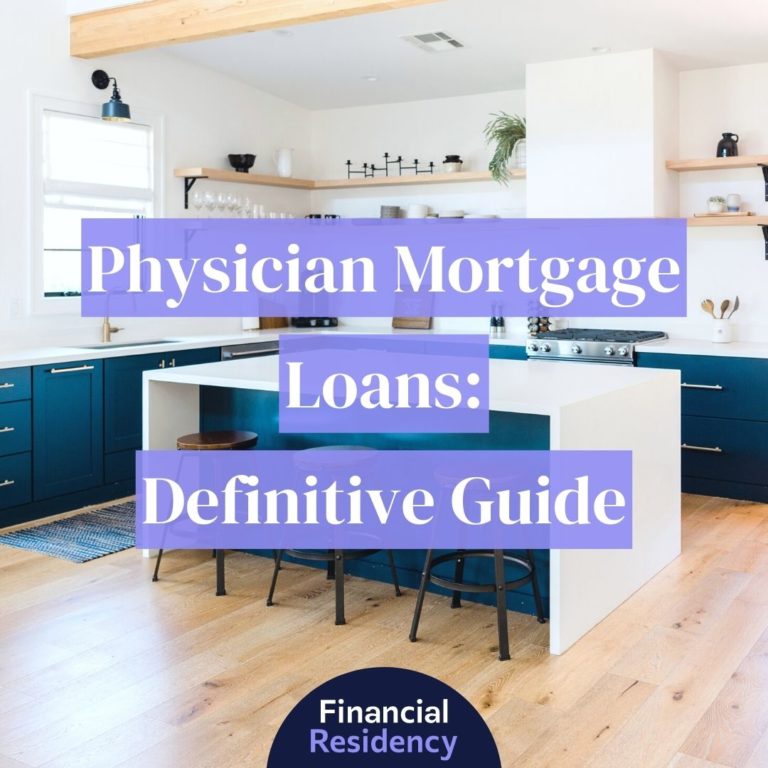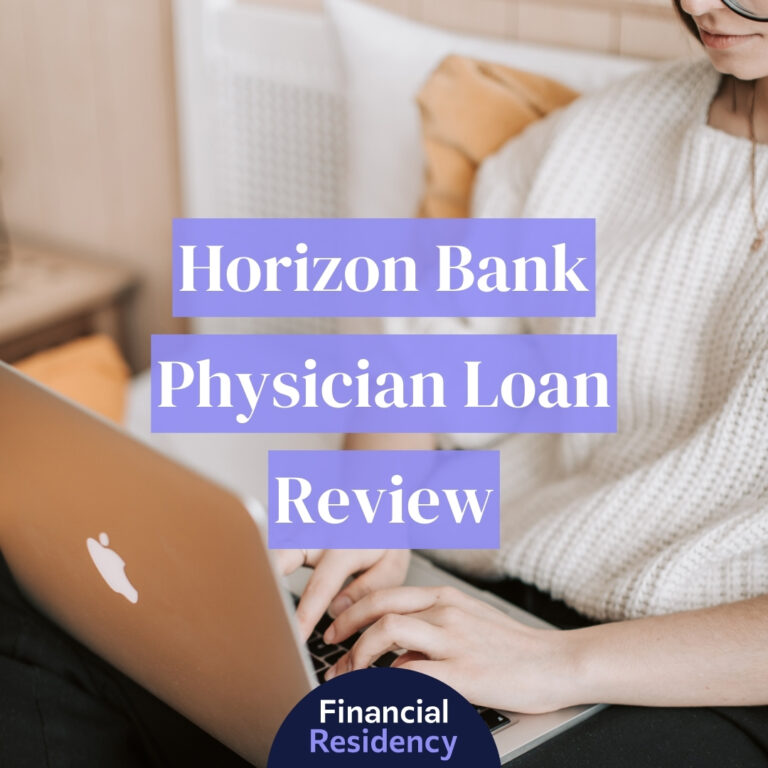Physician construction loans can help you build your dream home without saving for a 20% down payment.
Imagine a world where you have your long-sought-after medical degree, a good job, and your dream home in a place you love.
It may feel like a pipe dream if you’re drowning in student loan debt or discouraged by the current inventory of homes in your local market, but thinking outside the box can help you take charge of your future.
What is a Physician Construction Loan?
A physician construction loan is a type of doctor loan for physicians and other medical professionals looking to buy land and build their dream homes.
It is a mix between a physician mortgage and a construction loan offering special physician terms. You may also see it referred to as a physician home loan.
We interviewed Paul Rainer, a Mortgage Loan Originator at Synovus (NMLS 116670), to learn more about physician construction loans.
Synovus is an Equal Housing Lender and member of the FDIC. Their loans are subject to approval, including credit approval, and are subject to change.
Who Can Qualify For Physician Construction Loan?
1. Hold a Qualified Degree
Medical professionals must hold an acceptable degree to qualify for a physician construction loan.
It’s typical for medical doctors (MD), doctors of osteopathic medicine (DO), doctors of dental surgery (DDS), podiatrists (DPM), and dentists (DMD) to qualify, but sometimes you’ll see programs that include veterinarians (DVM) and other high-earning professionals.
There are a few exceptions, so it’s important to meet with a loan officer to understand all your options before deciding on a loan. If you’re a physician, even if you’re still in your residency or fellowship, chances are you can qualify for a physician construction loan.
2. 60 – 90 Days from Employment to Use New Income
You will need to be within 60–90 days of your employment start date at the time of closing if you plan on using your new job for proof of income. Otherwise, you must provide at least two years of tax returns or self-employment income.
Physician loans are lenient with employment contracts for early-career physicians because they’re statistically less likely to default on loans due to their high earning potential. This leniency is extremely helpful for residents nearing the end of their residency who want to use their attending physician income.
According to Paul, “the majority of demand for these loans comes from physicians leaving their residency and transitioning into their attending position.”
As long as the resident has a signed contract showing their new income and they’re within 60–90 days of their start date at closing, they can be approved based on their attending salary.
Some physician construction loans impose age limits. For example, it’s typical to see special rates for physicians who are within 10 years of completing residency.
3. Home Purchase or Refinance of a Primary Residence
It’s important to understand that physician construction loans have some restrictions regarding what type of construction they can be used for.
In general, you’ll only be able to use a physician construction loan to purchase or refinance a primary residence.
4. Proof of Sufficient Cash Reserves
You may also be required to show proof of sufficient cash reserves or open an online banking account with your lender to be approved.
Medical school debt can be a barrier to homeownership for many physicians, and lenders understand that.
For that reason, physician construction loan underwriters will often be flexible with debt-to-income calculation to help more medical professionals qualify.
Discover The Best Lenders Answer just a few questions about your career, where you're buying, and how much you want to borrow. Our service will then show you the exact programs you're eligible for from vetted physician loan specialists who will guide you through every step of the process – obligation-free!
How Much Can I Qualify For Using A Physician Construction Loan?
Like other mortgage loans, your approved loan amount is also based on your income and credit history. Your debt-to-income ratio greatly affects how much you can borrow and your down payment options.
The maximum loan amount you’re eligible for will be based on the cost of the land plus the cost to build your new home as determined by the builder.
Your debt-to-income (DTI) is a calculation of how much of your monthly income goes toward paying debt, such as credit cards, car loans, mortgage payments, and student loans.
Conventional loan programs often like to see DTI ratios lower than 43%, but some physician mortgage loan programs will be flexible with DTIs as high as 50%.
Physician mortgage loans are also more likely to be flexible with student loan debt, so your DTI ratio may not be as high as you think.
How the Maximum Loan Amount is Determined
Your maximum loan amount financed is determined by the formula below.
Maximum Loan Amount Formula
(Cost of Land + Cost to Build) * Maximum Loan to Value %
- Cost of the Land: Determining the cost of the land is fairly straightforward. The cost of the land is the offer amount the seller is willing to accept. This cost isn’t always the same as the list price. You’ll want to check to see if any additional costs will be incurred to remove existing structures, such as an old home or a shed before you can build.
- Cost to Build: Lenders typically work with your builder to determine the cost to build. Most lenders encourage the builder to pad costs by using high-end estimates to build. This is done to protect you from higher-than-approved building costs, since your loan can’t be increased once it’s approved. If the final cost to build is lower than expected, they’ll settle the difference at closing.
- Maximum Loan-to-Value %: Depending on the total amount financed, your loan-to-value (LTV) percentage might be lowered. This means you’ll be required to put in a larger down payment.
LTV Ratio
Currently, according to Paul at Synovus, their LTV ratio schedule for physician home loans is structured as follows:
- Up to $750,000: Maximum of 95% Loan to Value
- $750,000 to $1 Million: Maximum of 90% Loan to Value
- $1 Million to $1.5 Million: Maximum of 85% Loan to Value
- $1.5 Million and Higher: Maximum of 80% Loan to Value
The maximum loan-to-value for physician construction loans under $750,000 is typically 100%. Synovus lowered its maximum LTV to 95% during the pandemic, but it could be raised to 100% at a later date.
Most construction loans have a maximum loan-to-value percentage of 80%; however, it is typically higher for physicians and medical professionals.
The maximum loan-to-value percentage for non-permanent residents is 80%, regardless of the loan size.
With that said, every lender and loan amount will have different terms, so it’s important to meet with a qualified loan officer or financial advisor to make sure you’ve exhausted your down payment options and found the mortgage program that works best for you.
How to Determine Your Debt-to-Income Ratio with Student Loans
Student loan debt plays a major role in many physicians’ debt-to-income ratio, so it’s important to understand how lenders will view your debt before taking out a physician construction loan.
Borrowers on Fixed Repayment Plans
For physicians with student loans who are on a fixed repayment plan, such as the standard 10-year repayment plan, your monthly payment is used to calculate the debt-to-income ratio for a physician construction loan.
For borrowers on a fixed repayment plan, the initial cap on debt-to-income ratio is up to 50%. This means the maximum amount of your income the lender is willing to have to go into debt is 50%.
Borrowers on Income-Driven Repayment Plans
For physicians with student loans on an income-driven repayment plan, your current payment is used in your debt-to-income ratio.
This is a major differentiator between physician mortgages and normal mortgages, as most home loans are based on the 10-year repayment plan’s monthly payments, even if the borrower is on an income-driven repayment plan.
If you are currently a resident and you’re able to use your attending salary, your debt-to-income ratio could be much lower. Be sure to review your post-residency budget to ensure your new loan isn’t too high, even with your attending salary.
For borrowers on an income-driven repayment plan, the initial cap on the debt-to-income ratio is up to 43%, 7% lower than borrowers on a fixed repayment plan.
Cash Reserve Requirements for a Physician Construction Loan
Some lenders require that you have 10% of the total cost to build, not including the land cost, in assets. For example, if you finance $400,000, you’ll need $40,000 saved somewhere, such as in a savings account or retirement account.
This cash reserve requirement is to hedge yourself against higher-than-expected building costs.
Credit Score Requirements for a Physician Construction Loan
Most physician construction loans require a credit score above 670; however, some lenders have recently raised their minimum credit score requirement to 700. You may need an even higher score if you’re looking for 100% financing.
As your credit score increases, your risk level declines, and most lenders will allow a higher debt-to-income ratio for borrowers with a higher credit score. In general, borrowers with higher credit scores are eligible for the most competitive interest rates.
How Does Physician Construction Loan Financing Work?
The loan-to-value ratio and your maximum debt-to-income ratio we reviewed above are used to determine the total amount you can finance.
Let’s take a look at an example assuming financing limits are as follows:
- Maximum loan-to-value ratio is 95%
- Maximum debt-to-income ratio is 40%
For this example, let’s consider:
- A gross income of $150,000
- Total acquisition costs of $400,000 (land plus cost to build)
1. Estimate Your Approved Loan Amount
To estimate your approved loan amount, start by using the loan-to-value percentage:
(Maximum Loan-to-Value Ratio of 95%) * $400,000 = $380,000
So, before diving into the effects of your debt-to-income ratio, we already know that you will need to put down 5%, or at least $20,000.
2. Review Your Debt-to-Income Ratio
Next, we’ll review the debt-to-income ratio to see if that places additional limits on the amount you can finance. With a debt-to-income ratio of 40%, your monthly payment must remain under $5,000 a month.
We found this monthly limit using the following formula:
($150,000 Gross Income) * 40% / 12 months = $5,000
3. Estimate Your Monthly Payment
Using a financial calculator, we found that a $380,000 loan at 4% would have a monthly payment of $1,814, excluding taxes and insurance. Because this is well under our maximum monthly payment of $5,000 from our debt-to-income ratio, there shouldn’t be additional limitations on the amount we finance.
However, if you have student loans or other debt obligations, your debt-to-income ratio could further limit the amount you can finance.
Are Rates Competitive for Physician Construction Loans?
Most physician construction loans have competitive interest rates––similar to rates you would find for a normal physician mortgage.
In May 2020, Paul at Synovus said their interest rates typically fall close to 3.25% for a 30-year fixed-rate mortgage. These rates have risen significantly since then.
As such, it’s important to understand that the rate you receive at the beginning of your home-building process might not be the rate of your final mortgage.
Construction loans typically have a two-close process, meaning there are two points throughout the process where closing is required. Because some construction loans require a two-close process, the interest rate you receive at the beginning of the process might not be the rate of your final mortgage.
If a home takes a year to build, and rates have drastically changed over that year, your final mortgage could have a much higher rate. However, according to Paul at Synovus, their Physician Construction Loans have a one-time closing policy, allowing your rate to be locked in from the beginning.
Do Physician Construction Loans have PMI?
No, physician construction loans don’t have PMI or private mortgage insurance. PMI is typically required for borrowers with less than 20% equity in their homes, but physician construction loans waive this requirement.
Not requiring PMI can reduce mortgage payments by hundreds of dollars per month. PMI is typically 0.2% to 2.0% of the original loan amount per year and is spread across your monthly payments.
Underwriting Process for Physician Construction Loans
The underwriting process for physician Construction Loans is fairly simple. You must show proof of income through W2s, tax returns, or contracts if you use income that starts within 60–90 days of closing.
Lenders will work with the builder to ensure that all costs to build have been accounted for.
Closing on Physician Construction Loans
Some lenders will offer a one-time close, meaning there is only one set of fees and closing costs, and your interest rate is locked in.
If your lender uses a two-time closing process, you must prepare for changes in your interest rate, appraisal differences, and any changes to your income.
Appraisal differences can cause the value of your new home to decline, which could cause your loan-to-value calculation to change. The LTV limits will ultimately affect the down payment options you qualify for.
Any of these changes could significantly impact your monthly payments, so it’s important to be prudent and proactive when considering your loan options.
How Do Payments Work With Physician Construction Loans?
Builders typically require payments throughout the process rather than waiting until the home is built. Along the way, they must pay for supplies, contractors, and permits. Lenders, such as Synovus, typically have a process for paying the builder throughout the building process.
Paying the Builder
Paul at Synovus says they use an app and vetting process to pay their builders. Each builder is vetted through a process of reviewing their financials and past work.
Once a builder is vetted, and construction begins, they use an app called Built, where builders request payment, the borrower can approve the charge, and the lender will order an inspection. Once the inspection is complete, the money is sent to the borrower, who can pay the builder or contractors as needed.
Using their own app, they can track expenses and ensure that the project isn’t at risk of costing more than the approved estimate build.
Paying the Mortgage
Borrowers are often required to make interest-only payments on the loan amount they need to build the home. Construction loans can be riskier for lenders than other mortgage loans, so you may see it reflected in a higher interest rate.
If you’re unsure if your construction loan will require you to make interest-only payments while your home is being built, contact your lender for clarification.
After Construction
After your home is built, the lender will convert your loan to a normal amortized mortgage. At that point, your mortgage is treated just like any other physician mortgage.
You’ll want to ensure that your builder and their subcontractors have all been paid. Keep copies of invoices, receipts, and payments for a few years just in case.
If you’re considering buying land and building a custom home on it, a physician construction loan could save you money compared to a normal construction loan.
Be sure to ask your lender what the process will look like when your rate is locked in and if you must pay closing costs twice.
How to Find Physician Construction Lenders
Physician construction loans are offered by the same lenders that offer physician mortgage loans, which are typically credit unions, banks, and private companies.
However, the mortgage loans offered by each lender can vary by state, geographic location within the state, market conditions, and other factors.
We’ve vetted dozens of providers across the United States to recommend the best physician mortgage loans in each state. If you’re looking for a physician construction loan, we recommend discussing your options with a loan officer, financial advisor, or mortgage broker.
Lenders that Offer Physician Construction Loans
Many lenders offer physician loans, but not every lender offers construction loans because of the complexities involved. Here’s a list of some of the most popular lenders offering physician construction loans.
Citizens Bank
Citizens Bank has a physician loan program open to MDs, DOs, DDSs, and DMDs who have been out of residence for ten years or less. They exclude student debt from the DTI that’s deferred for 12 months or longer and lend up to an 89% LTV for construction loans.
First National Bank
First National Bank offers a construction loan for physicians with fixed and adjustable-rate terms. They don’t require PMI and the program is open to MDs, DOs, DDSs, DVMs, pharmacists, and DMDs as well as interns, residents, and fellows. They even offer LTVs up to 100% in some cases.
Liberty Federal Credit Union
Medical professionals in AL, IN, KY, MS, and TN can secure physician loans for construction financing with no PMI and 100% financing on loans up to $970,800 with Liberty Federal Credit Union.
They allow a 9-month construction period and require only interest payments during that time. Their loans are 30-year fixed rate, but they have ARMs available for those interested.
Physician Construction Loan FAQs
What type of loan is best for construction?
The best construction loan depends on your needs and expected budget. Construction loans can be structured in two ways. You could opt for a one-time close, making your loan “construction-to-permanent.”
This type of loan is all-in-one, meaning it will pay for the construction costs and then convert to a permanent mortgage when the home is built. One-time-close construction loans are the most popular loan option for borrowers looking to build a new home.
Two-time close loans will have an initial short-term loan for the construction costs, and then you’ll apply for a traditional mortgage after the home is built. Two-time close loans provide more flexibility by allowing you to shop around for the best rate once your home is built.
Is a physician loan the same as a conventional loan?
No, physician loans are not the same as conventional loans because physician loans are specifically designed for medical professionals and borrowers with eligible degrees. Conventional loans are open to the general public.
Are construction loans more difficult to get?
Yes, construction loans can be more difficult to get because they are considered riskier for the lender. Construction loans are difficult partly because the costs to build are harder to estimate, and it’s challenging to appraise an asset that doesn’t yet exist.
As such, it can be harder to qualify for a construction loan than a traditional mortgage. Any good loan officer will work with you to help you qualify for a loan that meets your budget and goals for your financial future, so even if you’re not in a position to qualify now, you can take steps to increase your approval odds.
How long does it take to qualify for a construction loan?
Qualifying for a construction loan can take as long as 45 days. While traditional mortgages may approve you in as little as 7–10 days, construction loans require additional steps. Getting pre-approved can help expedite this process.
Construction loan underwriters must review plans, building contracts, and specs before the mortgage can be approved, so it’s a good idea to have all your documentation together when you apply.




